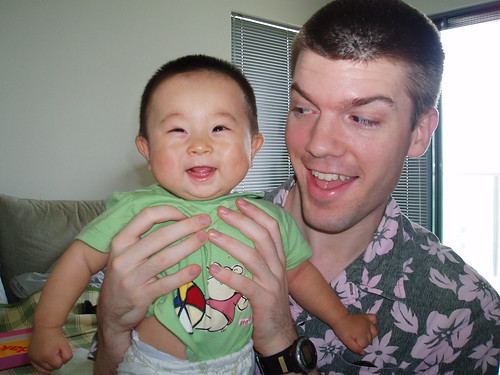
So, on Monday I had a baby. (He’s healthy, I’m healthy, and he’s the most perfect and adorable baby in the whole world, for the record. And no, that’s not him in the picture; the internet and kids makes me nervous.) We’re home from the hospital now, and returning to ordinary life, which is as you’d guess a lot of work. And lots of well meaning people want to help me. So they offer to hold the sleeping baby so I can get something done.
But holding the sleepy baby is not helpful. Holding a baby while they sleep is the single best part of having a newborn. They’re all sweet and snuggly in your arms, and they look like angels. Holding the unconscious baby = not work.
If you want to help me, offer to make me a sandwich or clean my bathroom or scan my tax documents so I can pay the IRS. Or hold the baby when he’s crying and won’t nurse or sleep or settle down. That’s the help I actually need right now.
I think too many aid projects just want to hold the baby. (In the case of orphanage tourism, quite literally.) They see what they think is a need – a need that’s easy to fill! And they rush to do it. They don’t stop to ask – what do you need?
This is true both of big institutional donor programs that are eager to apply the sexy solution of the day to every situation – microfinance, health savings accounts, results based financing – and small individual donors who create tiny barely-functional NGOs to provide broiler chickens or used clothes to the needy.
The answer is to pause first, and actually find out what people need. It sounds easy, but it’s not. Just asking people generally isn’t enough. I feel like a total jerk complaining about the nice people who want to help me by holding my son, and I am a deeply privileged resident of the wealthy world.
If I was a Bangalore slum-dweller or a Congolese villager, who would I feel comfortable talking to about my needs? Would I talk to a researcher from the capital about what I need and what I don’t? Or would I just be afraid that if I criticized any aid, they’d send it all somewhere else to people who were grateful?
Bad aid isn’t solely the result of laziness or indifference – doing research on people’s true needs is surprisingly difficult. So is designing programs that meet those needs. But taking the time to do it makes all the difference.
++++++++++
Chosen because it’s a guy holding a baby





